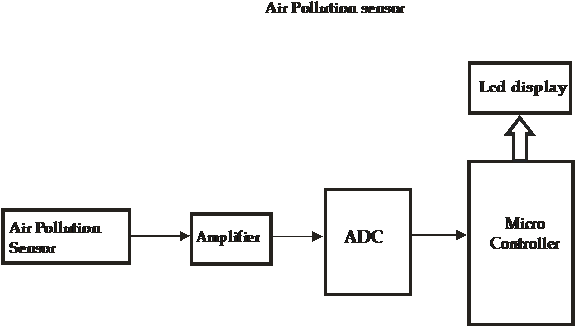OBJECTIVE: The goal of this project is to measure pollution in the air.
BRIEF METHODOLOGY:
This project was designed with an air pollution sensor, a virtual analog converter, an amplifier and a microcontroller with liquid crystal display. In this system, we use the atmospheric pollutant sensor to measure the pollutants that mix in the air.
It is the only type of sensor that acts as a transducer. It will produce a voltage output that corresponds to the degree of contamination, so it measures the pollutants inside the air and depends on the pollutants that generate the voltage pulse.
These pulses are at the millivolts level. therefore, will be given to the amplifier unit. The amplifier unit includes the operational amplifier. the small received voltage pulses are amplified at a certain voltage level, then the amplified voltage alerts are assigned to the ADC. This is the amplification stage of up to five volts Adc is no more than an analog-to-digital converter.
It is far the eight-bit converter. therefore, the corresponding virtual signals and signals are sent to the microcontroller. here the microcontroller can be atmel89c51 or PIC microcontroller, both are a reprogrammable flash type microcontroller in which we must write an embedded application to receive the ADC indicators and the corresponding variety of contaminants can be displayed on the LCD screen.
In the software program, we can write a set of rules to convert small changes of tension in the percentage degree of pollution.
Scope:
This challenge could be very helpful in the current situation due to the fact that so many people nowadays use cars because the variety of carbon in the air is high. This is very dangerous, it can have an effect on the human body, specifically, it causes diseases of the heart and lungs.
Some manufacturing units also deployed carbon nitrate in the air. then this task measures the combined pollution in the air.
BLOCK DIAGRAM:

